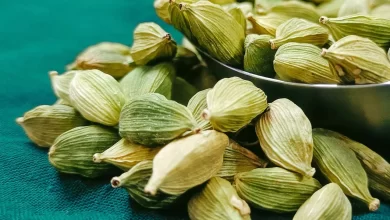Cheese is a versatile and beloved food that has been enjoyed by people for centuries. It is made by curdling milk, usually from cows, goats, or sheep, and then separating the solid curds from the liquid whey. Different types of cheese are made by varying the type of milk used, the specific bacteria and enzymes added during the curdling process, and the ageing method. Cheese can be enjoyed on its own, as a topping or ingredient in dishes, or paired with crackers, fruits, and wine. There are many different varieties of cheese, each with its own unique flavour and texture. Some popular types include cheddar, brie, mozzarella, and feta. Cheese is also a good source of protein, calcium, and other nutrients, making it a healthy and delicious addition to any diet. So let’s dive into the world of this beloved food with these interesting facts about cheese.
- Cheese is believed to have been first discovered more than 7,000 years ago in the Middle East.
- More than 1,800 varieties of cheese are produced worldwide.
- The largest cheese ever made in this decade weighed over 34,000 pounds and was produced in Wisconsin in 2012.
- Some types of cheese, such as Roquefort and Gorgonzola, are made using mold cultures.
- The word “cheese” comes from the Latin word “caseus.”
- Cheese is an excellent source of protein, calcium, and vitamins A and B12.
- Switzerland produces the most cheese per capita in the world.
- The blue veins in blue cheese are caused by the mold Penicillium roqueforti.
- Cheese is often paired with wine, as the flavours complement each other.
- The world’s oldest known cheese, dating back to around 1,600 BCE, was found in the tomb of an Egyptian pharaoh.
- Some types of cheese, such as cheddar and parmesan, can be aged for years to develop a more intense flavour.
- The process of making cheese involves separating the curds from the whey, which is the liquid that remains after the curdling process.
- Cheesemaking is a complex process that requires skill and knowledge, and the best cheesemakers are often highly respected in their communities.
- Different types of cheese can have very different textures, ranging from soft and creamy to hard and crumbly.
- Cheese can be made from the milk of cows, goats, sheep, and even buffalo.
- Some cheeses are smoked to add flavour, while others are wrapped in leaves or soaked in alcohol to create a unique taste.
- Cheese can be made from both pasteurized and unpasteurized milk, with some types being considered safer to consume when made from pasteurized milk.
- Some types of cheese, such as feta and queso blanco, are traditionally made without rennet, a key ingredient in most cheesemaking processes.
- Cheese is often used as a natural preservative in foods, as it can help to prevent the growth of harmful bacteria.
- In some cultures, cheese is used as a form of currency or as a gift to be exchanged during celebrations and festivals.
- Cheese has been used as a food source for astronauts on space missions due to its long shelf life and nutritional value.
- Nestle makes the most cheese in the world, and its dairy products brings in $94 billion a year.
- The holes in Swiss cheese, such as Emmental and Gruyere, are caused by carbon dioxide gas bubbles that are created during the cheesemaking process.
- Some cheeses, such as Limburger and Munster, are known for their strong, pungent odour.
- Cheese can be made using a variety of coagulating agents, such as rennet, lemon juice, or vinegar.
- The cheese that broke the world record was made on March 14, 1988. It took 12 hours to press the curds to get the whey out, and the 40,000-pound block took three weeks to cool down.
- In some cultures, such as Italy and France, cheese is a central part of the daily diet and is often eaten with bread or fruit for breakfast or as a snack.
- Pule, the most expensive and rare cheese in the world, is made from the milk of Balkan donkeys. And it is solely made in the Serbian Zasavica Special Nature Reserve. These donkeys are found to be rare and are of endangered species.
- Cheese can be stored for long periods of time if kept in the right conditions, such as in a cool, dry place or in a temperature-controlled environment.
- Some types of cheese, such as cream cheese and cottage cheese, are made using a different process than most other cheeses, which involves adding acid directly to the milk to cause it to curdle.
- Cheese can be made with added flavours, such as herbs, spices, or even fruits, to create a unique taste.
- Cheese is enjoyed around the world and is used in a wide range of cuisines, from Italian pasta dishes to Mexican quesadillas to American grilled cheese sandwiches.
- Some types of cheese, such as ricotta and paneer, are made by heating the milk and curdling it with an acid.
- In some cultures, cheese is eaten as a dessert, either on its own or paired with fruit, nuts, or honey.
- Some types of cheese, such as cheddar and Colby, were originally developed in the United States.
- Some types of cheese, such as halloumi and paneer, can be grilled or fried without melting.
- Cheese can be made in a variety of shapes and sizes, including wheels, blocks, and wedges.
- The process of ageing cheese involves storing it in a cool, humid environment to allow the flavour to develop over time.
- Some types of cheese, such as gouda and provolone, can be waxed to help preserve them and keep them fresh.
- The flavour of cheese can be affected by the diet of the animal it comes from, with grass-fed animals producing cheese with a different flavour than grain-fed animals.
- Some types of cheese, such as mozzarella and ricotta, are often used in Italian cooking.
- Cheese can be used as a base for dips and spreads, such as queso dip or pimento cheese spread.
- Cheese can be made at home with relatively simple equipment and ingredients, although it does require some skill and patience.
- Some types of cheese, such as gorgonzola and Stilton, are often served with crackers or bread as a snack.
- The taste and texture of cheese can be affected by the climate and geography of the region where it is produced.
- Some types of cheese, such as blue cheese and Camembert, are aged using a process called “blooming,” which involves exposing the cheese to specific bacteria and mold cultures.






